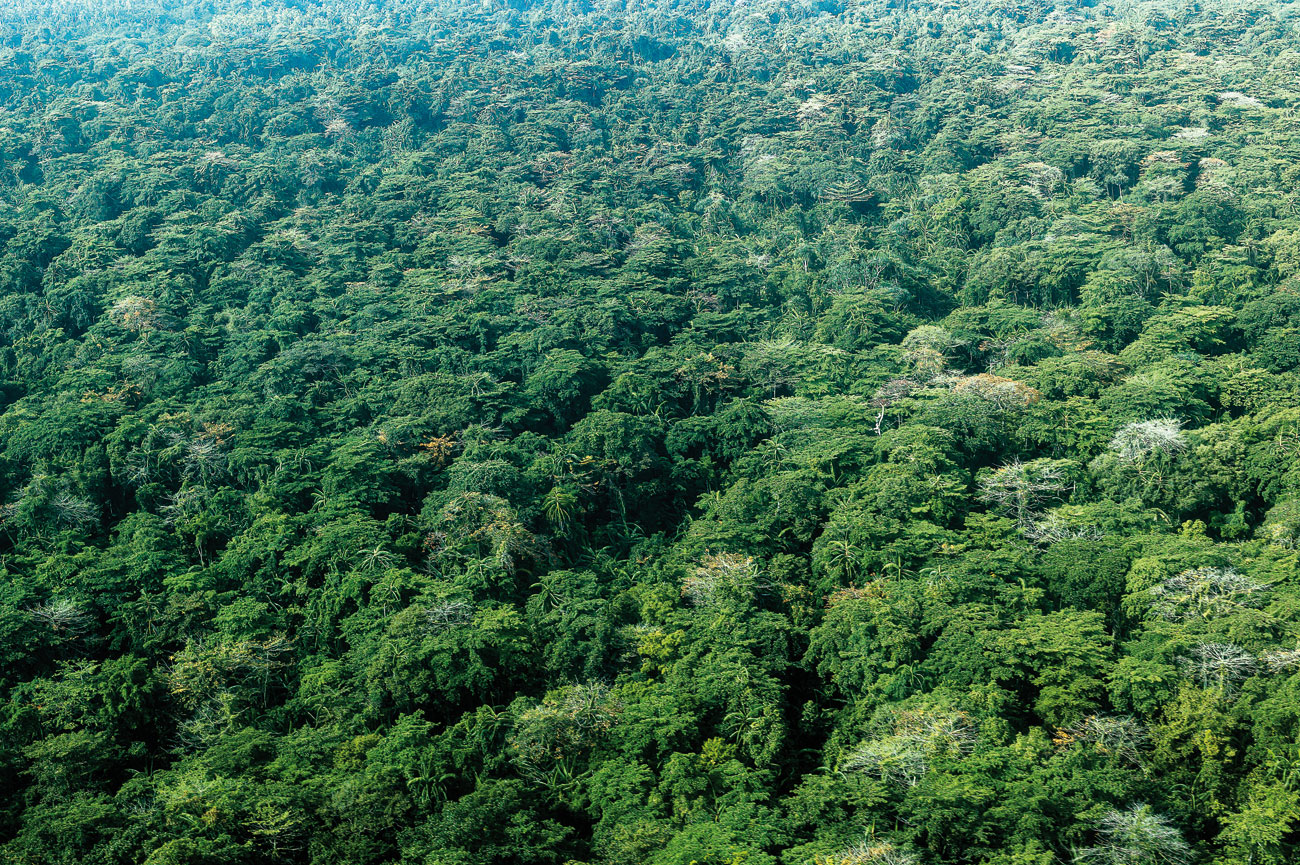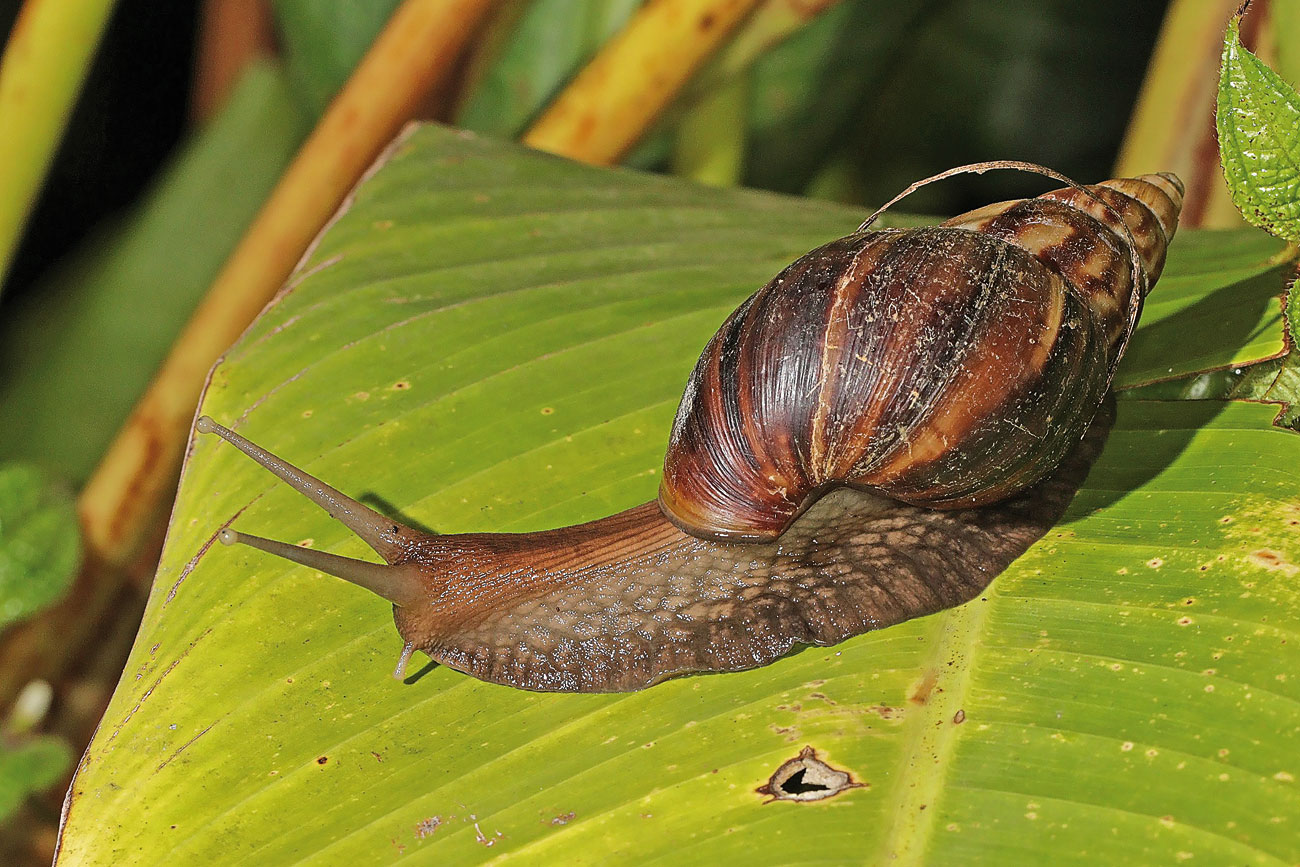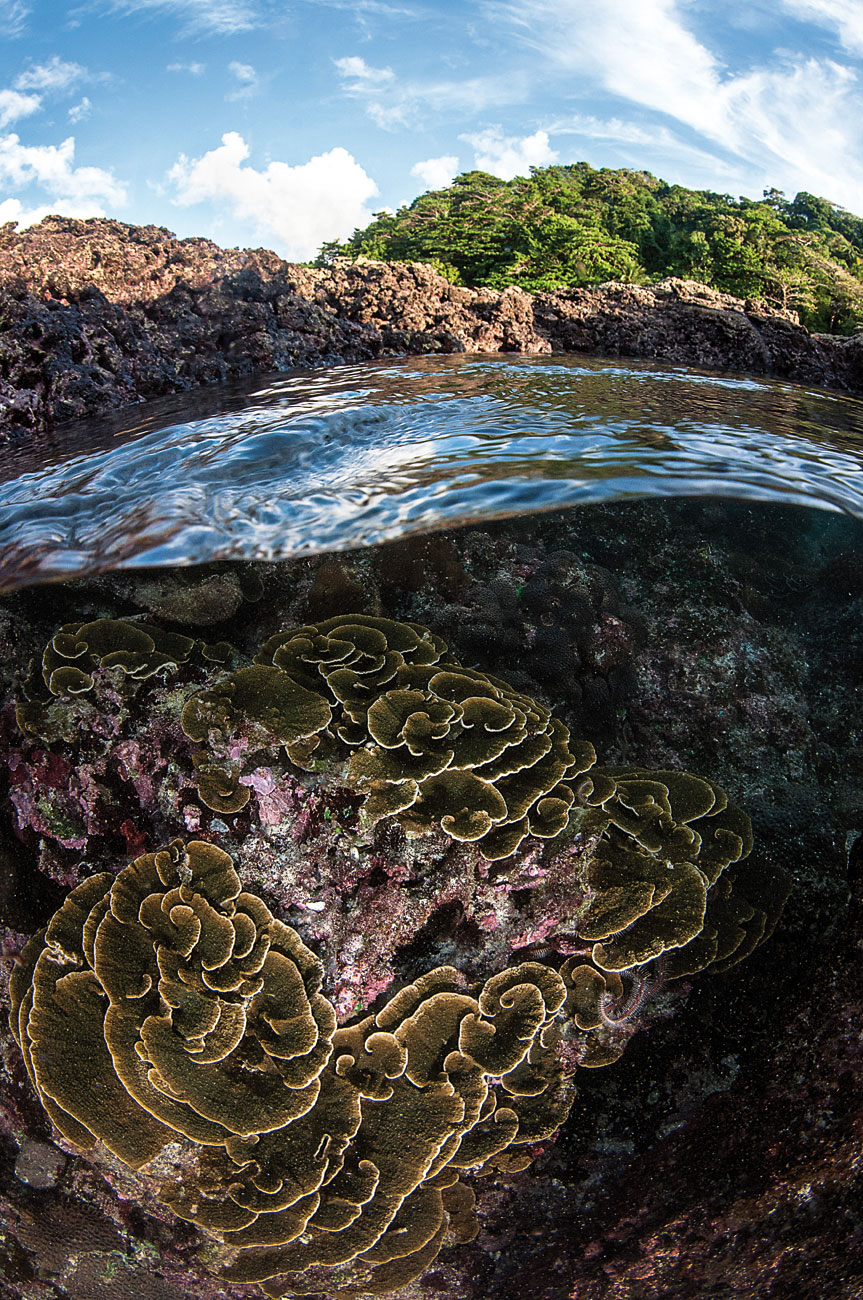Degrees of insularity: What Islands Can Teach Us
First published in Sanctuary Asia,
Vol. 43
No. 4,
April 2023
By B. Chaudhuri
Islands on Earth are often unique places, isolated from mainland continental landmasses and carved by time and the elements of nature into their distinct identities. Depending on size, maritime conditions, and biogeographical features, islands can serve as important repositories of ecological and anthropological heritage. These incredible blends of land and water are continually shaped by a complex, interlinked and dynamic interplay of geological, meteorological, and ecological processes that are influenced by a range of factors. Islands can be of different kinds, depending on geography and origin. For instance, Majuli is a riverine island that emerged from a change in the course of the Brahmaputra; Lakshadweep arose from the deposition of coral sediments and parrotfish faeces on undersea volcanic outposts; and the Andaman and Nicobar Islands (ANI) developed out of the accretion of sediments from Indo-Malayan subduction.
Diversity And Vulnerability
The ANI constitutes an archipelago in the Bay of Bengal that supports a rich diversity of flora and fauna within a diverse range of ecosystems. Islands often present unique challenges to habitability and there are very few historical examples of human settlement of an island not coinciding with extermination of local biodiversity. However, the ANI is an example of a relatively small island archipelago where Indigenous peoples have existed for tens of millennia, without precipitating ecological catastrophes. The biogeography of these islands has been uniquely captured in the cultures of local people and shaped by their stories. One can find many examples of traditional ecological knowledge and Indigenous belief systems based around conservation in the multitude of ethnic groups that are indigenous to the archipelago. For instance, certain Nicobarese ethnic groups have specific forest management practices around clearing of vegetation, tied with customs that prohibit forests from being visited at specific seasons of the year, and designated zones – including entire islands – where human presence is forbidden. These customs are integrated within the rich sea of myths and folklore of the Indigenous peoples. To the mainlander’s imagination, the islands might represent exotic, unknown locations for exploration but to the Indigenous peoples, each island is a microcosm of knowledge, stories, myths and cultural nuances. For a non-islander, a greater appreciation of the diversity and vulnerability of these islands can be gathered from the various accounts, memoirs and stories in the literature of people who have lived, visited, worked or been on exile on these islands.
The climatic regime on these islands is equatorial, with marginal variability in average temperatures throughout the year, a short dry season, and a long, wet season. Even though the entire archipelago lies within the tropics, each island possesses its own unique set of ecosystems, which, coupled with the Indigenous traditions, belief systems and knowledge rooted in these places, gives each one its unique identity that might not be apparent to a casual observer. During the colonial era and thereafter, there has been a gradual erasure of Indigenous socioeconomic systems rooted in land, water and forest management. Large-scale removal of natural vegetation has led to considerable heterogeneity in local temperature across the islands akin to the ‘heat island’ effect, apparent in metropolises in mainland India. Although the islands receive abundant rainfall during the southwest and northeast monsoons, there are reports of water stress. Local rainfall patterns have also likely been affected by deforestation over the past century. Climate change and biodiversity loss are intimately related to each other. Climate change and disruption of stable seasonal patterns and extreme weather events result in habitat and biodiversity loss and these losses exacerbate the effects of climate change. Nature-based solutions that rely on conservation of biodiversity and strengthening of ecosystems are one of the most effective methods for mitigating climate change. Healthy ecosystems and a stable climate are functions of each other, and biodiversity conservation is one of the most efficient and economically viable means of climate change mitigation.

The central part of the Great Nicobar Island is at a peak elevation of 914 m. and the terrain is inaccessible with dense rainforests along valleys that harbour pristine ecosystems. Photo: Gobind Sagar Bhardwaj.
Biodiversity And Climate
The stories of people who have lived or worked on these islands often reflect an understanding of how climate on these islands has been changing and how biodiversity has been on the retreat. Islands can teach us about the concept of carrying capacity, and the reciprocal relationship between biodiversity and climate. One of the most unfortunate examples that illustrates this well has been a phenomenon repeated over and over again on several tropical islands in recent human history. A large influx of settlers on islands leads to a series of cascading effects, starting off with deforestation and habitat fragmentation. This can, in remarkably short periods of time, change the entire biogeography and climate of an island, clearing out rainforests, leading to increased temperature and lower humidity and thereby less rainfall, which then causes the groundwater level to plummet along with the extinction of local biodiversity. A researcher who has worked in the islands (and wishes to remain anonymous) recalls that mainland settlers on ANI remember the islands to have been much wetter for nearly 10-11 months in a year, which has now drastically reduced to five to eight months, depending on where you are in the archipelago. Such a reduction in rainfall alongside rampant urbanisation has pushed Port Blair city to a predictable but previously unthinkable tipping point – a severe lack of potable water. Expectedly, several technological fixes to the water crisis are either planned or under execution but such fixes generally fail to recognise that hydrological cycles are intimately linked with other biogeochemical cycles. The fact that vegetation cover is a key determinant of climate becomes visibly important on small islands such as those of the Nicobar archipelago, where one can observe such a correlation between vegetation and microclimate firsthand. Living on an island entails a greater appreciation of the interconnectedness of natural processes and cycles and a greater understanding of how resource supply chains of the modern world operate, as well as how they fail to acknowledge the fact that there are limits to the availability and cycling rate of natural resources. Management of land and water resources becomes more important on an island due to the limited amount of land and freshwater available for use. Similarly, the management of energy and waste requires special attention on islands. The current global economic model is linear (resource extraction to waste) and works on an assumption of unlimited resource supply. Living on an island can provide a stark reality check vis-a-vis the feasibility of such a global economic model. Any model of sustainable development on islands should be able to demonstrate circularity, in order to be considered holistic.
The Andaman and Nicobar Islands feature two of the four biodiversity hotspots within the geographical territory of India. In contrast to the mainland, these islands have a high rate of endemism owing to their geological and ecological isolation, and owing to the fact that the region cradles both the Indo-Burma and Sundaland biogeographic zones. The islands are home to some of the most ancient Indigenous peoples of South and Southeast Asia, who have adapted to their land and the surrounding ocean over millennia. Their cultures, belief systems and traditional ecological knowledge constitute an irreplaceable heritage of humanity. From the viewpoint of biodiversity, Great Nicobar is particularly rich with a wide range of ecosystems – coral reefs and seagrass meadows, coastal wetlands and scrublands along the coastline, and a range of tropical forest types as one moves towards the interior of the island. The central part of the island is at a peak elevation of 914 m. and the terrain is inaccessible with dense rainforests along valleys that harbour pristine ecosystems. Such places are certainly important natural laboratories for life to thrive, where the forces of natural selection still operate without human interference.

The spread of invasive species such as the giant African snail Lissachatina fulica in Great Nicobar, results in loss of habitat and biodiversity. Photo: Public domain/Charles J. Sharp.
The Ecological Splendour of Great Nicobar
With a landmass of less than a tenth of the Andaman and Nicobar Islands, Great Nicobar harbours a whopping 1,767 faunal and 811 floral species with an overall endemism of 16.96 per cent (marine biota excluded), and contributes a third of all endemic birds, and a fourth of all endemic flowering plants. High avian diversity of Great Nicobar is also a result of its location on the intersection of the Central Asian and the East Asian-Australasian bird migratory flyways, the latter being the most threatened of the eight flyways in the world. The tremendous biodiversity of the island justifies its moniker as the ‘hottest hotspots of the world’. The islands are also sanctuaries for phylogenetically ancestral populations/species such as the Nicobar Megapode, the parental stock of 21 extant megapode species. Unsurprisingly, the rate of discovering novel biodiversity from Great Nicobar and this region is several fold higher than even the Western Ghats and the Northeastern Himalayas. For example, based on three expeditions between 2017 and 2019, the Central Island Agricultural Research Institute reported 39 new records of floral species from Great Nicobar.
Challenges And Opportunities
The diverse ecosystems that Great Nicobar supports within a ~900 sq. km. area are not comparable to any similar mainland landmass. This diversity also renders them fragile and highly vulnerable to natural and anthropogenic pressures. Factors such as disruption of stable seasonal patterns, extreme weather events, and anthropogenic effects such as land use changes, agriculture, environmental pollution and spread of diseases (e.g., avian cholera in megapodes in 1997; lumpy skin disease in cattle in 2022) and invasive species such as Prosopis juliflora and the giant African snail in Great Nicobar, result in loss of habitat and biodiversity. Adequate evidence exists on how loss of biodiversity could affect agricultural productivity and ultimately, food security as well as climatic stability. Compared to technological solutions, nature-based solutions that rely on conservation and strengthening of natural systems are often sustainable and effective methods for mitigating the effects of climate change. For example, along coastlines, mangroves act as natural buffers against the effects of extreme weather events like tropical cyclones.
Coastal and island communities are particularly susceptible to the impacts of climate change such as inundation, groundwater contamination, and coastal erosion as a result of rising sea levels, aridity and intense/frequent extreme weather events. Local examples of such endangerment can be observed in the Central Nicobar islands of Chowra and Trinket, which have been casualties of groundwater contamination, rendering them uninhabitable, and Kamorta, which relies on Katchal for water supply during the dry season. Another essential island case study is Jakarta. Indonesia has recently declared that they will shift their capital from Jakarta in Sumatra to Nusantara in Borneo as a result of rapid land subsidence (26 cm. annually), a rise in the Javan sea levels, seismic risks, a clean water crisis, and several other factors. However, the seemingly environmental origin of the crisis is a culmination of century-old colonial socio-politics, which included discrimination, deprivation and the neglect of native communities. Until recently, the Jakarta government remained in absolute denial and ignored early warnings of broad scale submergence of the northern regions of Jakarta. ANI and Greater Nicobar can learn a lot from Jakarta.

The ANI archipelago is an incredible blend of land and water, continually shaped by a complex, interlinked and dynamic interplay of geological, meteorological, and ecological processes. Photo: Tasneem Khan.
Coastal ecosystems are ecotones between terrestrial and marine ecosystems, and unsustainable human activities along coastlines disrupt this continuity. Conservation of such ecotones and natural resources on islands is also extremely essential to maintain human habitability and build resilience. Strengthening climate resilience requires protection of island ecosystems and biodiversity, adoption of island-centric approaches in all aspects of life and livelihood, including but not limited to: the choice of building materials; infrastructure design; economic and societal organisation; food production, distribution and consumption; national security; governance and policy making. We need to see how our survival and sustenance on islands is intertwined with their ecological integrity – once it is threatened, we will be too. To achieve sustenance amidst the global crisis of the natural world, we need to radically reimagine ‘development’ by distilling it from a global capitalistic order and redefining it based on ecology, wellbeing and happiness. One hopes that a greater focus on ethics and the rights of nature emerges in the discourses around development in the near future. Our approach needs to shift from projecting conservation as a means to ensure the continuity of economic benefits arising out of nature to it being rooted in the right that natural systems should have, to exist. The people who settle in islands need to therefore, reforge their regional identities within unique insular identities in coherence with the local environment and Indigenous communities can act as models for this reforging of relationships with the natural world.
I return to reflect on the Ron Garan quote that began this piece. The analogy of Earth as an island juxtaposed on the actual experience of living on an island has brought me a sobering understanding of just how many variables need to come together to sustain life on this pale blue dot.
B. Chaudhuri has trained in neuroscience and wildlife biology research, and is experienced in undergraduate pedagogy and biodiversity conservation education.




